Do you want to gain a competitive advantage in the ever-changing SEO world? Do you yearn to offer your website visitors an improved user experience? Utilizing schema SEO markup can become your key asset.
Discovering and exploiting the hidden potentials of this technology, investigating its diverse categories, and teaching how to write schema markup. Carrying out its implementations successfully so that it brings maximum improvement to your site’s search engine performance.
First, let us thoroughly review the fundamentals of schema markup and comprehend why it is such a basic element of modern SEO tactics.
Key Takeaways
- Schema SEO is a structured data tool that helps search engines understand web page content, boosting visibility and click-through rates.
- To maximize SEO performance, familiarize yourself with the types of schema markup available and use tools to generate code accurately.
- Monitor your website’s schema markup using Google Search Console for optimization tips and real-world examples of successful implementation.
Table of Contents
Understanding Schema SEO
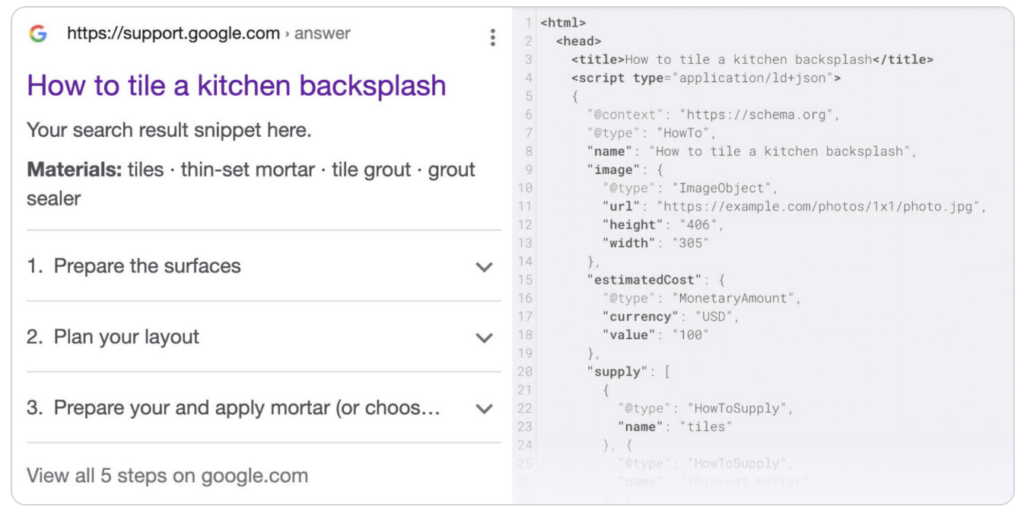
Schema markup, a form of structured data. Helps major search engines gain an understanding of the content on web pages by providing extra context with an html tag. This is useful for increasing visibility online and potentially improving click-through rates in search results.
One popular type that focuses on content management system org information is organization markup. Rich snippets can be featured such as images or user ratings within these enhanced presentations due to this standardized vocabulary. Making it essential for SEO efforts at any website looking to show off relevant material to its users effectively.
Not only does schema mark up act like a meta description, but also allows major search engines to comprehend page content better, leading to more people viewing your site through increased rankings brought about from searching the internet easier than ever before.
Schema Markup Defined
Schema markup is an incredibly useful type of code used to provide context for search engines, allowing them to better understand your content.
It employs a hierarchical structure which consists of types and their associated properties as developed by major search engines. As such, it can assist in the interpretation of web pages for more accurate searches with improved results presented to users.
To capitalize on its advantages, one should become acquainted with all available options like the most common schema types and related features so that they are providing relevant information about said content when engaging in schema mark-up strategies.
This way SEO performance will be optimized at maximum potential levels.
How Search Engines Utilize Schema Markup
Search engines can leverage structured data in order to intelligently display relevant content, and potentially improve click-through rates with rich snippets.
To do so, schema markup is categorized into three various markup types:
- Microdata
- RDFa
- JSON-LD
Each implemented using specific HTML tags. Of these options, the recommended format for implementation of this type of code is JSON-LD due to its simplicity as well as its official endorsement from Google.
Ultimately though schema markup helps search engines better understand your content, which leads to more effective search results on your website, resulting in improved SEO performance overall!
Types of Schema Markup for SEO

Using the correct types of schema markup can be a major factor in optimizing your website’s SEO performance and making it stand out in search engine results. We’ll explore some popular and industry-specific markups used for this purpose, so you are sure to benefit from them.
Schema markups enable websites to display useful information such as reviews or ratings on products, as well as other hidden page elements such as details about local businesses that show up in searches, all while helping boost visibility.
Knowing how these different kinds of tags work is crucial if you want an edge over competitors when it comes time for visitors to find what they’re looking for quickly through search engines like Google or Bing.
So go ahead and dive into the world of schema markup! Learn which type makes sense according to your content so you maximize its potential during users’ queries online – have fun exploring both widely available options as well as more niche ones designed with particular industries/niches needs in mind.
Commonly Used Schema Markups
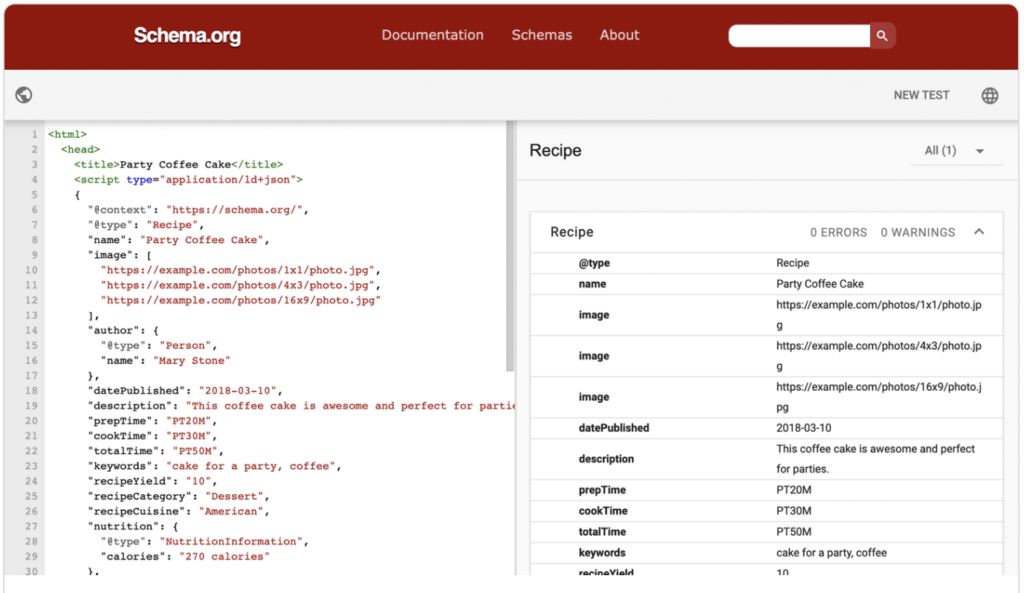
It is essential to write schema markups for your website in order to boost SEO efforts. By adding this type of a code snippet, it can give search engines relevant information about the content on a page, which could result in being displayed directly on a search engine results page (SERP).
Common types of schemas include product markup, local business and event taggers. All with the intention of improving visibility and click-through rates when users are searching online. To look at. Into available options, Schema’s Organization Page allows people an insight into different kinds of existing markups out there.
Do note that having these won’t guarantee any listings but merely provides Google necessary details to decide if its applicable or not for searchers needs.
Niche-Specific Schema Markups
Search engines can gain extra and more precise details with niche-specific schema markups. These are structured data elements that provide enhanced information about certain kinds of content, making them especially beneficial for websites in particular industries or niches by helping search engines comprehend and display relevant material to users.
For instance, Recipe Schema & LocalBusiness. Schemas give the necessary info regarding your recipes/local business, thus enabling better prominence when people do a search via these services through implementing tailored schemas which deliver pertinent facts desired by visitors.
Implementing Schema Markup on Your Website
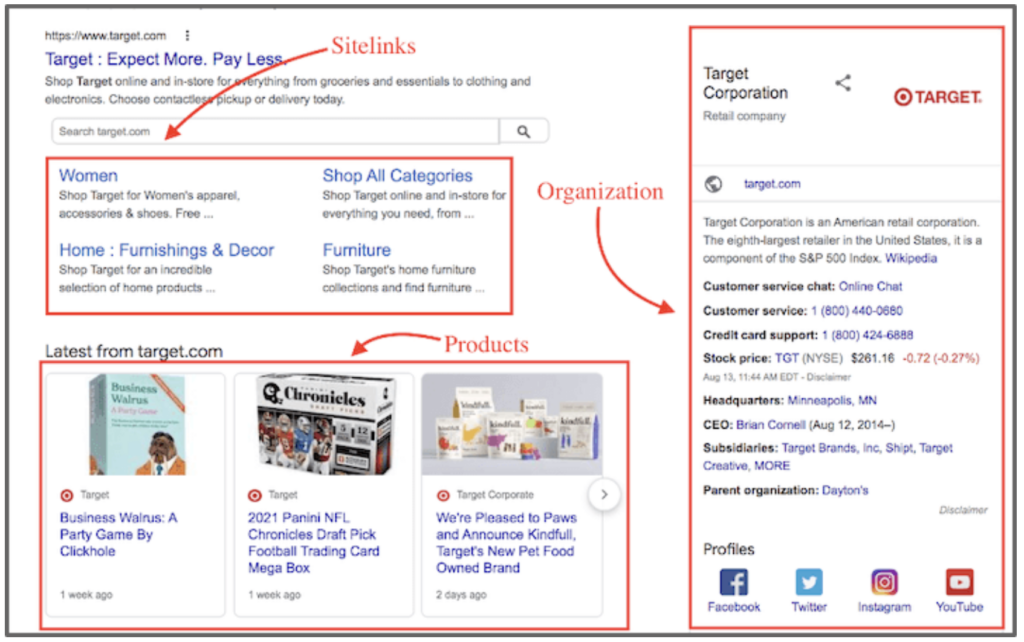
To make use of the advantages that schema markup offers to SEO, it is important to know how effectively implement this type of code on one’s website. Thus, in order to help guide you through the process of adding schema to properly and get your search engine performance enhanced by adding appropriate schema tags, we offer step-by-step instructions along with advised formats as well as tools for better implementation.
Schema mark up has great potential when used correctly. Following all outlined steps will give a hand toward making full advantage of its utilities while enhancing your web page’s visibility in searches.
Choosing the Right Format: JSON-LD vs. Microdata vs. RDFa
It is important to choose the most suitable format for schema markup: JSON-LD, Microdata or RDFa. Of these three, JSON-LD stands out as the simplest and most favored option due to its user friendly nature which also makes it easier to incorporate into your website’s code. It has been officially supported by Google too. Credibility. If you need alternative formats then both Microdata and RDFa can be used instead. Micro data being used in HTML elements whereas with RDFA on XHTML elements may prove beneficial depending upon individual requirements. Ultimately though, the recommended choice remains firmly focused around employing a well established json ld approach when applying relevant schema mark up solutions at large.
Tools and Resources for Generating Schema Markup
Using various tools and resources available online, you can add schema markup to your website so that search engines can comprehend the content better. Popular options to implement schema markup are Schema Pro, Rank Math’s Generators or Webcode.tools‘ Schema Markup Generator plus Google’s Structured Data Markup.
Helper which is especially convenient for SEO related tasks since it creates code snippets necessary to implement the given schema marker on a website of choice and enable helpful information in SERPs. Using these solutions helps enrich visibility as well as accuracy when displaying results relevant to queries made by users in a search engine platform.
Testing and Validating Schema Markup
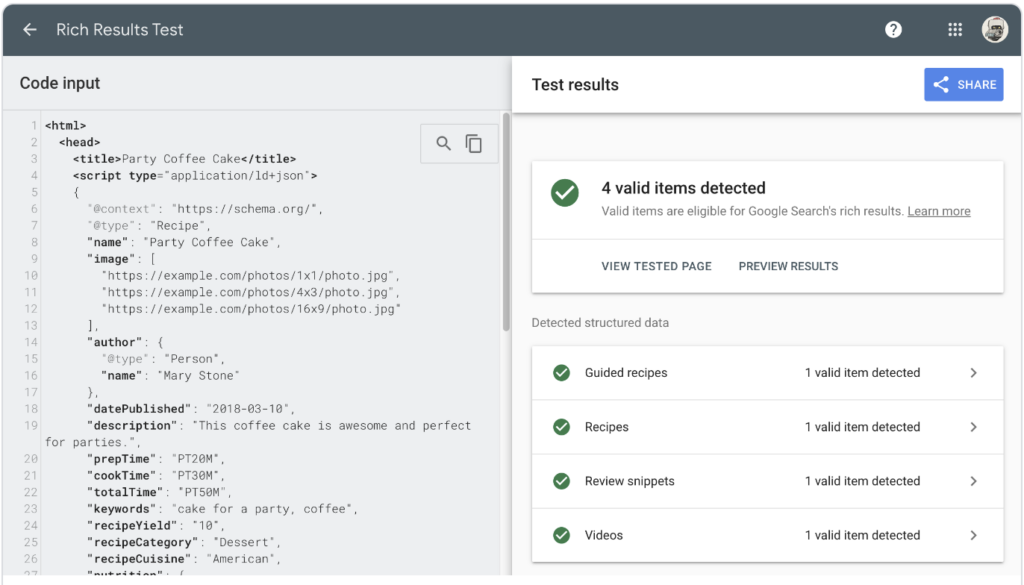
It is essential to test and validate your schema markup after its implementation on the website in order to ensure accuracy, avoid errors and maximize SEO performance. This section will explain why testing schema data matters as well as introduce Google’s Structured Data Testing Tool for identifying potential issues while also providing helpful advice about fixing associated warnings or mistakes during validation.
Google’s Structured Data Testing Tool
Google has created a Testing Tool for Structured Data to inspect the schema markups on your web page and determine which Google Rich Results can be generated. This helpful tool verifies that search engines are getting accurate details from your website, making it an invaluable asset when optimizing SEO.
To make use of this program, put either the URL or HTML code directly into the testing application. It will then scan through all information contained within each item’s markup and point out any existing mistakes or issues so they can be corrected quickly before submitting again.
Fixing Errors and Addressing Warnings
When validating your schema markup, it’s vital to address any issues present since search engines won’t make use of the data if there are errors. Addressing all warnings isn’t necessary, but can be very helpful in determining potential improvements for implementation. Google’s Structured Data Markup. Helper is a great tool for creating new schema markup important for when mistakes occur during validation. Afterward, verify accuracy and completeness using the Rich Results Test.
Monitoring and Optimizing Schema Markup for SEO
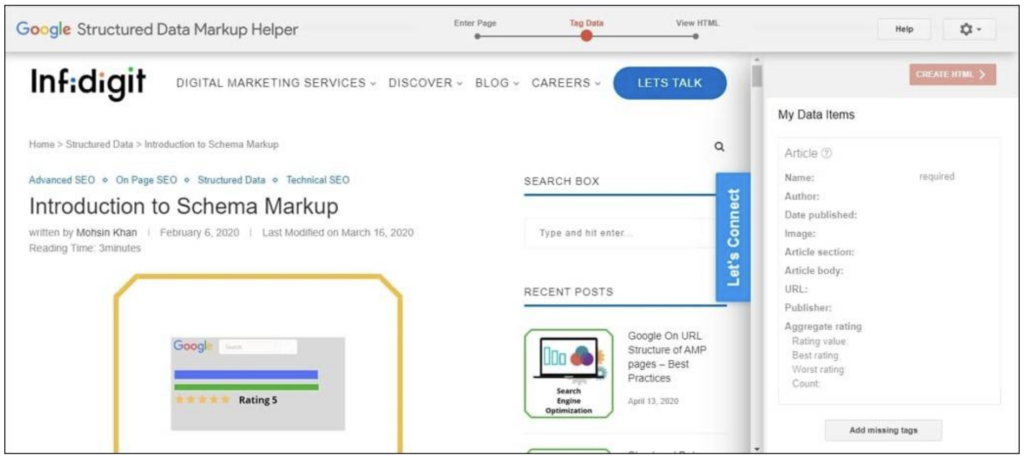
It is essential to pay attention and make changes continuously to preserve the quality of your website’s schema markup for better SEO results. As a way of keeping track, you should use Google Search Console for monitoring purposes as well as optimising it. When needed. Doing this on an ongoing basis will help major search engines understand and grasp more precise data about the content within our site with ease.
Monitoring and fine-tuning your existing schema mark up can have positive implications on boosting visibility in SERPs (Search Engine Results Page). This can be achieved by closely evaluating its implementation over time while making necessary adjustments throughout that process too!
Using Google Search Console for Monitoring
Google Search Console is a key resource for evaluating the implementation of schema markup and noticing potential problems. By verifying your website in Google Search Console, you can see all recognized markups shown on the “Enhancements” tab.
Monitoring schemas’ performance with this tool helps to spot areas that need improvement and ensure search engines receive proper info from your site. Consistent assessing of schema data should be done so SEO outputs are kept at their peak level throughout time via pertinent changes when needed.
Tips for Optimizing Schema Markup
It is essential to optimize the implementation of your schema markup in order to get maximum benefits for its effect on SEO outcomes. For optimization, make sure you’re using JSON-LD, Microdata or RDFa format, select the most precise classification available, indicate only what’s included within a page and link related entities with each other by utilizing references from places like Wikipedia as definitions.
By adhering to these tips and continuously evaluating how well your schema markup functions will help search engines better comprehend information about all that’s featured on your website which can thereby raise visibility when searches are done plus grant users an enhanced experience while navigating through it.
Real-World Examples of Schema SEO Success
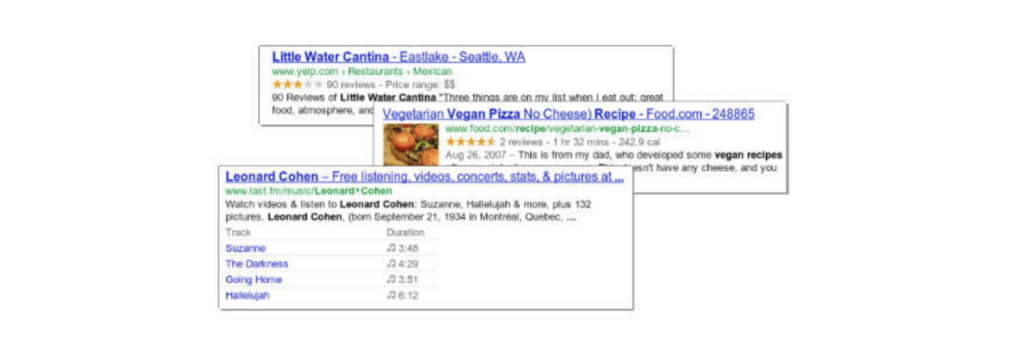
Schema markup can provide an effective boost to a website’s SEO performance, which is evidenced by real-world examples such as the BBC and The New York Times. These organizations have used it to increase their own search result visibility or click-through rate respectively. Ecommerce sites stand to gain from schema markup with product reviews and ratings featured prominently in their search results. Thus positively impacting overall SEO performance for those websites. By utilizing appropriate schemas for specific content types, users are able to make sure that they grab attention within relevant searches while providing visitors a much more user friendly experience on their site too.
Quick Recap
Using the right schema markup for your website’s content can greatly enhance its SEO performance, helping search engines understand and showcase it in their results. With a few simple steps such as optimizing, adding schema markup and leveraging available tools and resources, you too can benefit from this advantage! So don’t miss out. Start using Schema Markup today to maximize success in Search Results.
Frequently Asked Questions
How do I create a schema in SEO?
Forming a schema for SEO follows some steps: determining the data type from what’s offered, inputting the URL of linked data for whatever page you wish to mark up, completing markup on that specific page, producing HTML codes and adding them to your site.
Lastly, checking if structured data has been properly added.
After all this is finished, using schema marking can bring beneficial changes in terms of search engine optimization performance results.
What are schemas in Google?
Google Schema is a kind of structured data that enables search engines to have more comprehensive and relevant information regarding website content. Through utilizing this system, you can create html that can aid Google in getting an improved understanding of what’s on your site, which then leads to increased visibility within the results shown by these search engines.
What is schema in a website?
Schema is the language search engines use to better understand the content on a website. It is semantic vocabulary that helps web crawlers categorize the elements of data items the page, making it easier for search engines to identify the relevancy and quality of the content.
Put simply, schema offers context about what the page is talking about.
What are the benefits of schema SEO?
By integrating Schema markup, companies gain added visibility and an improved user experience that results in better search engine rankings. Ultimately, this leads to amplified customer involvement, higher website visits and superior performance on the whole.
With Schema SEO businesses can take full advantage of their digital presence by crafting optimized websites which fulfill all marketing goals and aspirations.
What is schema in a website?
Schema is a form of structured data that enhances the accuracy and pertinence of search engine results displayed on webpages. It provides more specific information about what content the website contains, such as product descriptions or customer reviews, which helps search engines understand better what each page means. This assists them in providing relevant searches results for users. Search engine results accuracy can be improved through schema’s use of organized structured data vocabulary allowing for informed decisions when it comes to searching online.
